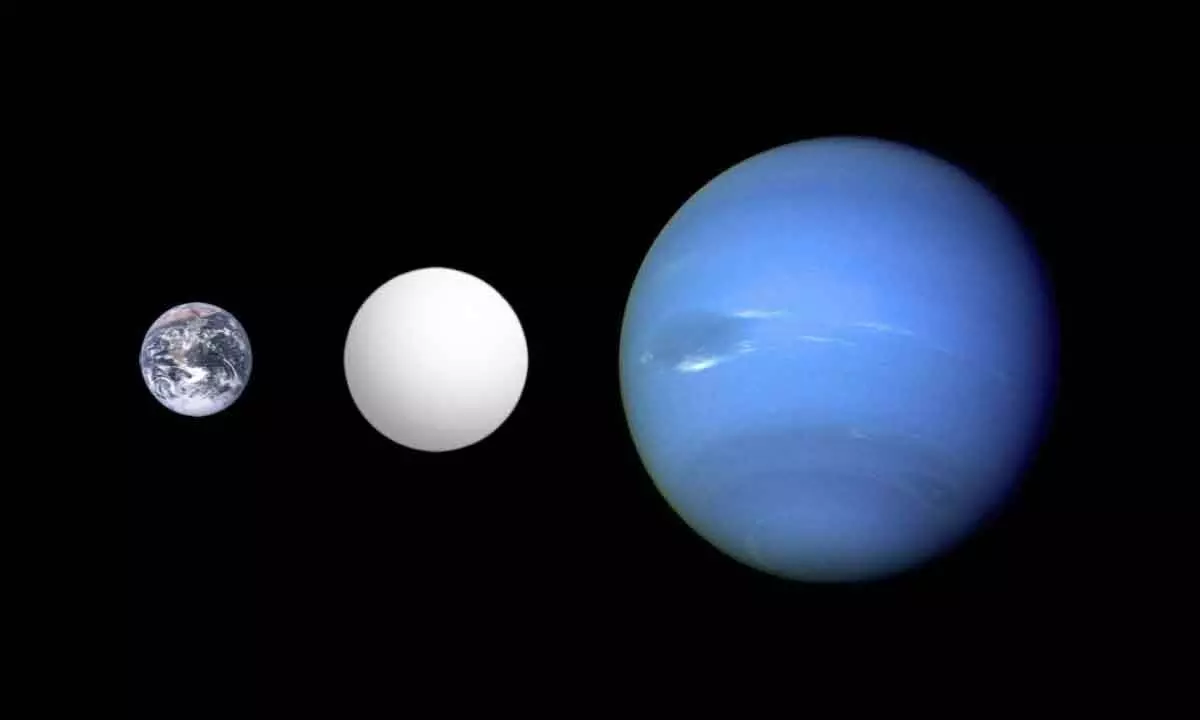Live
- GHMC proposes euthanasia for aggressive strays
- Over 6 lakh Olive Ridleys turn up at Gahirmatha
- Two women journos held for ‘defaming’ CM
- 25 lakh ‘Lakhpati Didis’ in next 5 years: Patra
- Villagers come together against illegal mining
- NALCO holds Customers’ Meet
- Notorious criminal injured in encounter
- Food safety officials inspect mangoes at Mozamjahi mkt
- Oppn seeks withdrawal of Bahinipati’s suspension
- Newly nominated member takes oath at SCB Board meeting
More earth like exoplanets out there


The possibility of liquid water generated by radioactivity, it is likely that a high percentage of these exoplanets can have sufficient heat to sustain liquid water - many more than we had thought. We know that the presence of liquid water is essential for life. Our work shows that this water can be found in places we had not much considered. This significantly increases the chances of finding environments where life could, in theory, develop.
There are probably many more Earth-like exoplanets with liquid water than had been thought, significantly increasing the chance of finding life, according to a study that shows finding water on exoplanets is 100 times more likely.
The study, published in the journal Nature Communications, showed that even where the conditions are not ideal for liquid water to exist at the surface of a planet, many stars will harbour geological conditions suitable for liquid water under the planet’s surface.
“We know that the presence of liquid water is essential for life. Our work shows that this water can be found in places we had not much considered,” said lead researcher Dr Lujendra Ojha, from the Rutgers University in the US.
“This significantly increases the chances of finding environments where life could, in theory, develop,” he added while presenting the findings at the Goldschmidt geochemistry conference in Lyon, France.
The researchers found that even if the surface of a planet is frozen, heat generated from radioactivity can allow water to liquify underground.
In the analysis, the team focused on the planets found around the most common type of stars - suns called M-dwarfs. These are small stars, which are much colder than our Sun.
About 70 per cent of stars in our galaxy are M-dwarfs, and most rocky and Earth-like exoplanets found to date orbit M-dwarfs.
“We modelled the feasibility of generating and sustaining liquid water on exoplanets orbiting M-dwarfs by only considering the heat generated by the planet,” Ojha said.
The team found that considering “the possibility of liquid water generated by radioactivity, it is likely that a high percentage of these exoplanets can have sufficient heat to sustain liquid water - many more than we had thought,” the researcher said.
“Before we started to consider this sub-surface water, it was estimated that around 1 rocky planet every 100 stars would have liquid water. The new model shows that if the conditions are right, this could approach 1 planet per star. “So we are a hundred times more likely to find liquid water than we thought. There are around 100 billion stars in the Milky Way Galaxy. That represents really good odds for the origin of life elsewhere in the universe,” Ojha said.

© 2025 Hyderabad Media House Limited/The Hans India. All rights reserved. Powered by hocalwire.com






